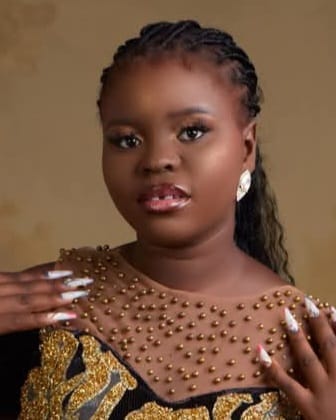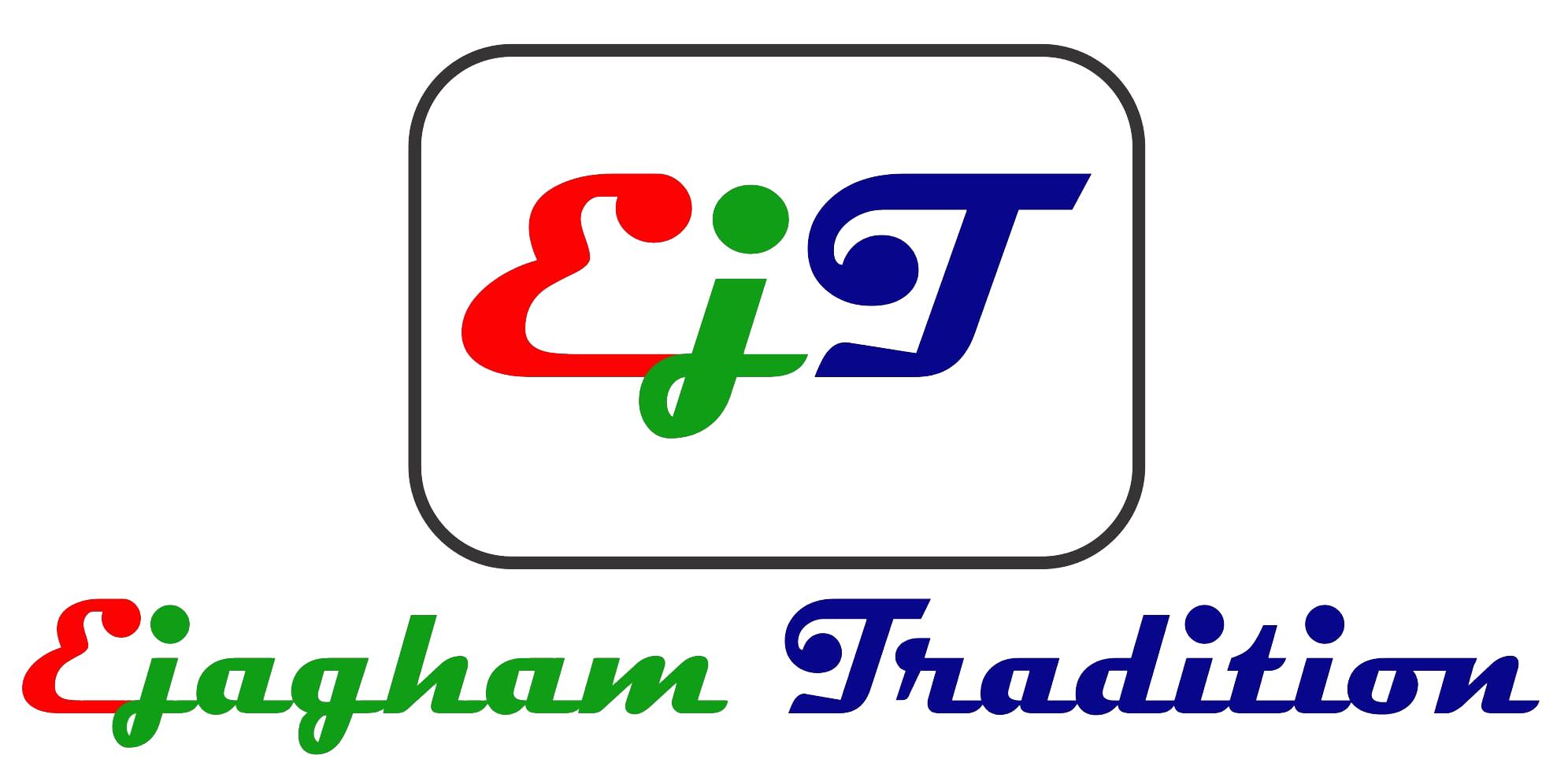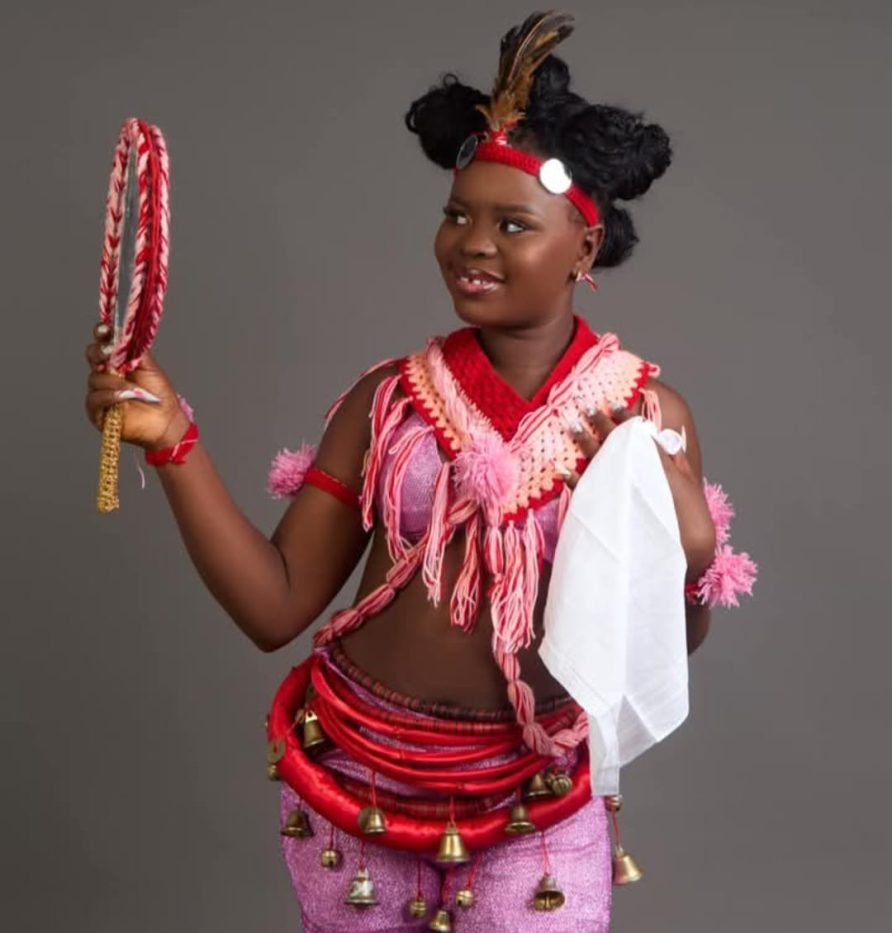Monenkim Costume – Elegance and Heritage: The Magnificent Costumes of Ejagham Monenkim By Ruth Tabe
My Motivation
Driven by a deep concern over the misrepresentation of Monenkim costumes in the media, particularly on social platforms, I was compelled to undertake a comprehensive study to accurately define and document their true essence. This research led me to three communities in Ejagham Akamkpa, Nkame, Mfamiyen and Nyaje, where I engaged with esteemed elders and cultural experts who generously shared their knowledge and insights into the rich traditions surrounding Monenkim attire. Through these invaluable conversations, I was able to piece together a more authentic understanding of what constitutes Monenkim costumes, ensuring that their representation remains faithful to their cultural significance.
The Institution and Types of Monenkim
The Nkim Institution is a significant coming-of-age traditional practice for Ejagham maidens. It serves as both an initiation into womanhood and a symbol of their readiness for potential motherhood. The Monenkim dance is the ceremonial “outing” that marks this transition, celebrating the successful orientation of young women into their new societal roles.
The term Monenkim is derived from two Ejagham words: Mon, meaning “child,” and Nkim, meaning “circumcision.” Together, Monenkim translates to “Circumcised Maiden.” Monenkim is categorized into three broad groups:
- Monenkim – This is initiation for young women entering womanhood. Participants traditionally appear bare-breasted, though they may opt to tie a piece of fabric around their neck. The outing of this type of Monenkim signifies the completion of their initiation into womanhood.
- Nkim Nkat – This is Monenkim for brides. This is the category for those who have undergone Monenkim but remain unmarried. This group wears a tube top and may also choose to tie a piece of fabric around their neck.
- Monenkim Agud – This is a distinction for women who have become mothers. They wear a brassiere and, if desired, may also tie a piece of fabric around their neck.
Symbolism in Dance and Accessories
Monenkim exudes confidence and grace as she dances, fanning herself while admiring her reflection hence the broad smile when dancing. When handed a staff to “jonghe” (imitate) Mgbe, it signifies her father’s status as Mgbe initiate or royalty. Her movements, combined with the rhythmic jingling of Ajore and Nguri (small bells), add dynamism to her performance, showcasing her elegance and cultural mastery.
The Monenkim Accessories
Each accessory worn by Monenkim is imbued with profound cultural and symbolic meaning. The composition of her regalia varies according to her category or role, reflecting the hierarchical and ceremonial nuances of Ejagham tradition. Monenkim’s traditional attire and adornments exemplify the rich cultural heritage and exquisite craftsmanship of the Ejagham people. Every element—meticulously chosen and assembled—conveys layered significance, representing ideals of pride, beauty, status, and reverence.
The accompanying image is a faithful visual interpretation created by the author to portray the complete ensemble of Monenkim accessories, honoring their historical and cultural essence.
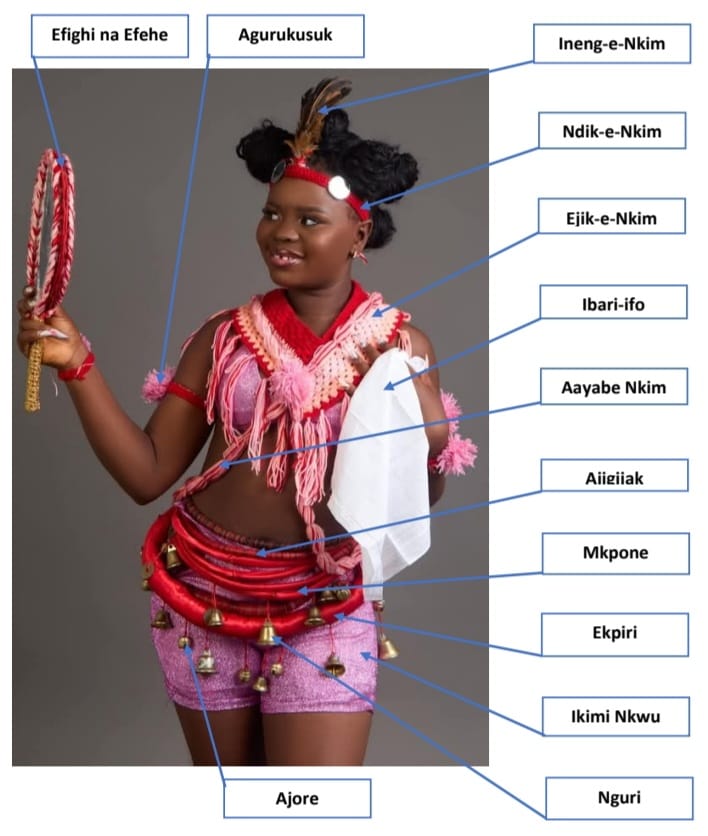
-
Hand-Held Accessories
Monenkim’s hand-held accessories include a cotton yarn or raffia-woven hand fan known as Efighi, often adorned with a centrally placed mirror called Efehe, allowing her to admire her beauty while dancing. A handkerchief called Ibari-ifo, held on the other hand, serves multiple purposes—wiping sweat, flaunting with pride, and demonstrating Nchibi and Mgbe signs during traditional performances. Sometimes, she also carries a Flying Whisk called Iki Mfong as well.
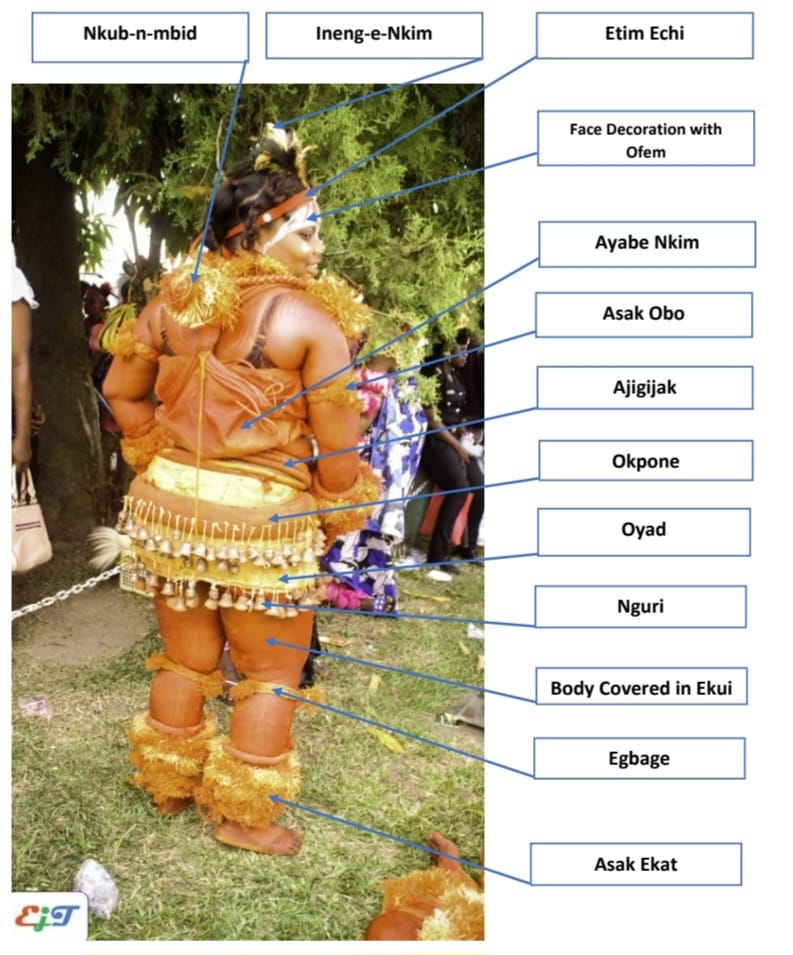
-
Arm and Wrist Adornments
Her upper arms and wrists are adorned with raffia or cotton yarn arm and wrist bands called Agurukusuk or Asak Obo, emphasizing the artistry of woven and crocheted embellishments.
-
Body Decoration
Her body is beautified with camwood paint, known as Ekui in Ejagham, which enhances and brightens the skin. Her face is adorned with Nchibidi/Nsibidi symbols, meticulously drawn with local clay known as Ofem.
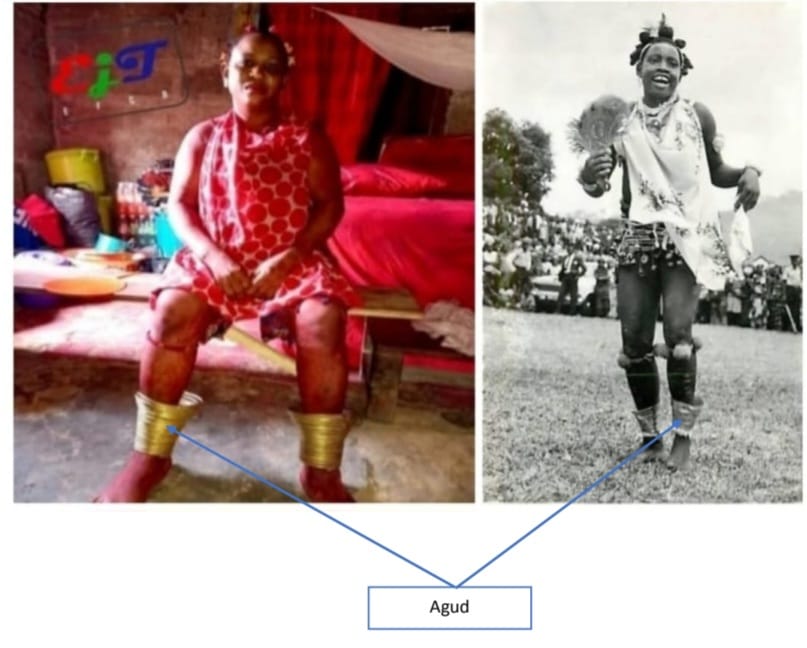
-
Leg Accessories
Her legs are adorned with Agud brass shackles, cushioned on Ekumi Agud made from fabric of choice. The installation of Agud involves heating the brass for ease of shaping. The pain associated with the installation of Agud reflects Monenkim’s strength and resilience. In the absence of Agud, Mgbat Itim or Asak Ekat is tied on the lower leg.
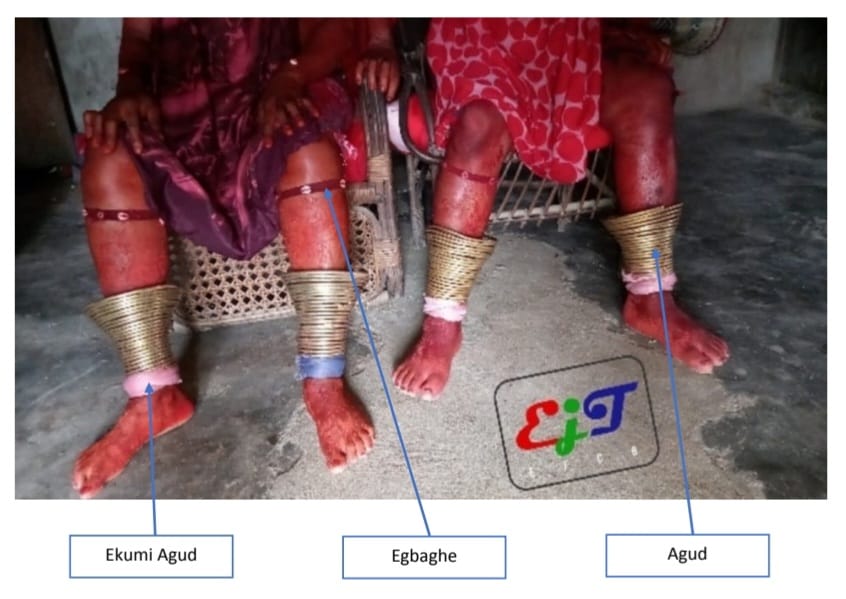
-
Waist and Body Accessories
The crossing beads or braided yarn running from her shoulder to stomach is called Bayabe Nkim. Her waist is adorned with Ajigijak, Amighe Atem (beads), Mkpone, and Ekpiri, making her waist heavy with accessories that symbolize status and femininity. Mkpone is made up of three sewn elements – Ajore, Nguri, and Penny coins – with the latter representing her family’s wealth.
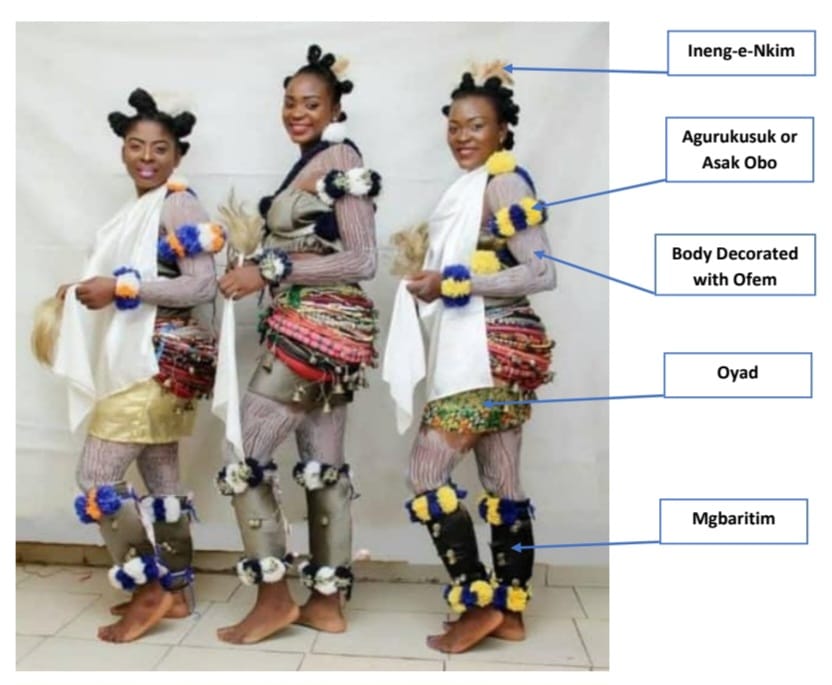
-
Attire and Hair Adornments
Monenkim traditionally wears bum shorts, called Ikimi Nkwu Atah or mini skirt called Oyad, crafted from a fabric of choice, though often concealed beneath her waist accessories. Her hair is styled in bantu knots and decorated with Porcupine quills called Ikip, cowries called Obae, beads called Atem, and wooden spikes. Atop her head, she wears the headband called Ndik-e-Nkim or Etim Echi, with a majestic crown of feathers called Ineng-e-Nkim that flutters as she performs the head dive when dancing. The Ineng-e-Nkim symbolizes dignity, grace, and royalty.
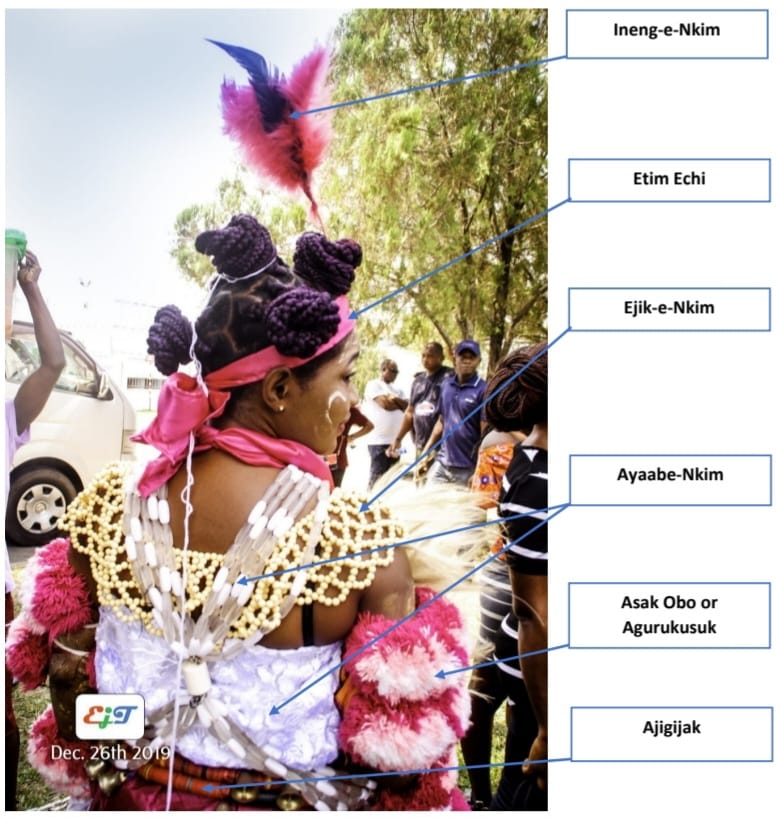
-
Neck Collar
The neck collar called Ejik-e-Nkim or Ndim-n-mbit in Oban is a prestigious accessory, representing respect and honor. Ejagham maidens who undergo the Nkim tradition earn admiration and recognition in their communities. The collar may be beaded, crocheted from cotton yarn, or woven with raffia.
